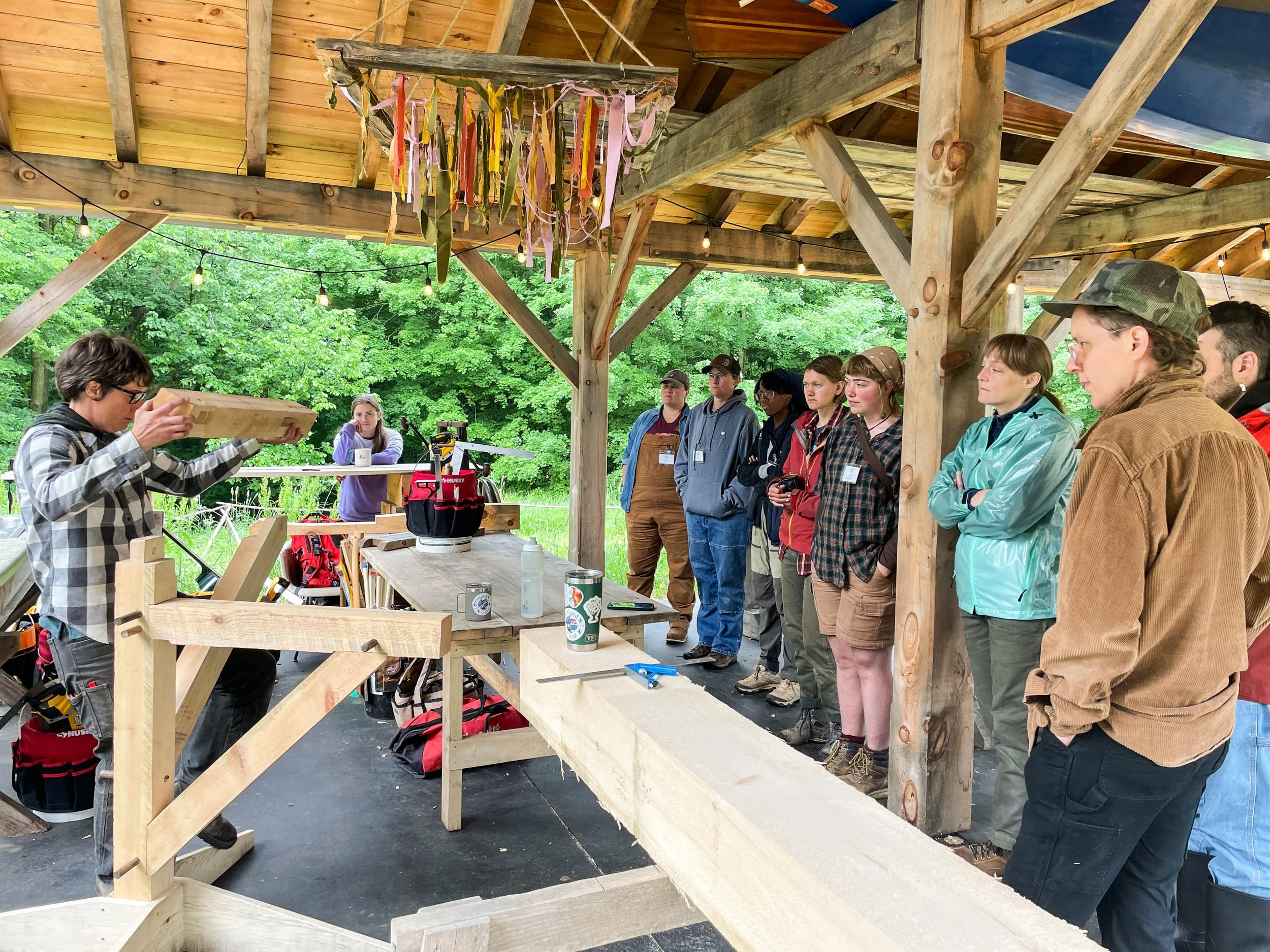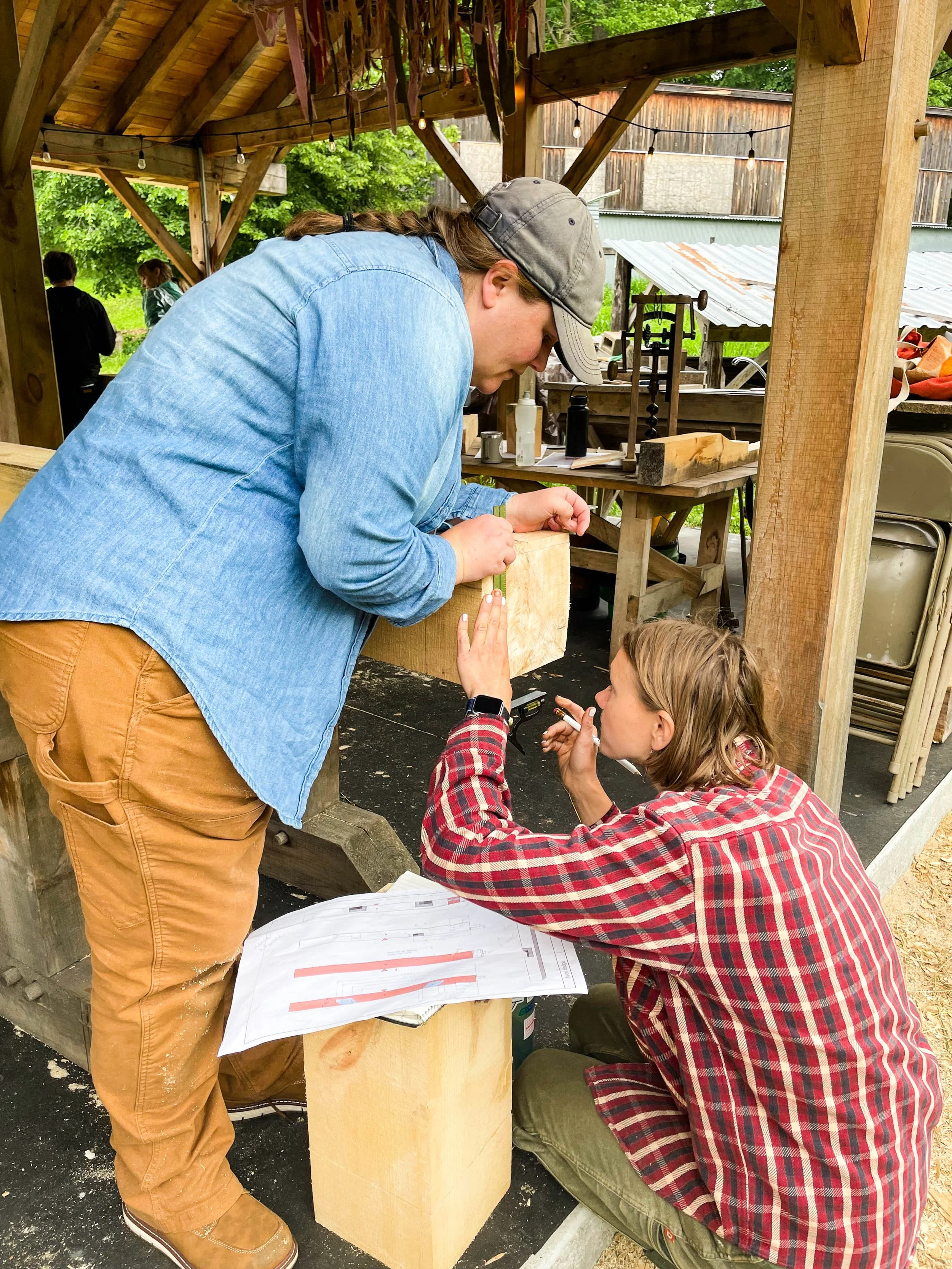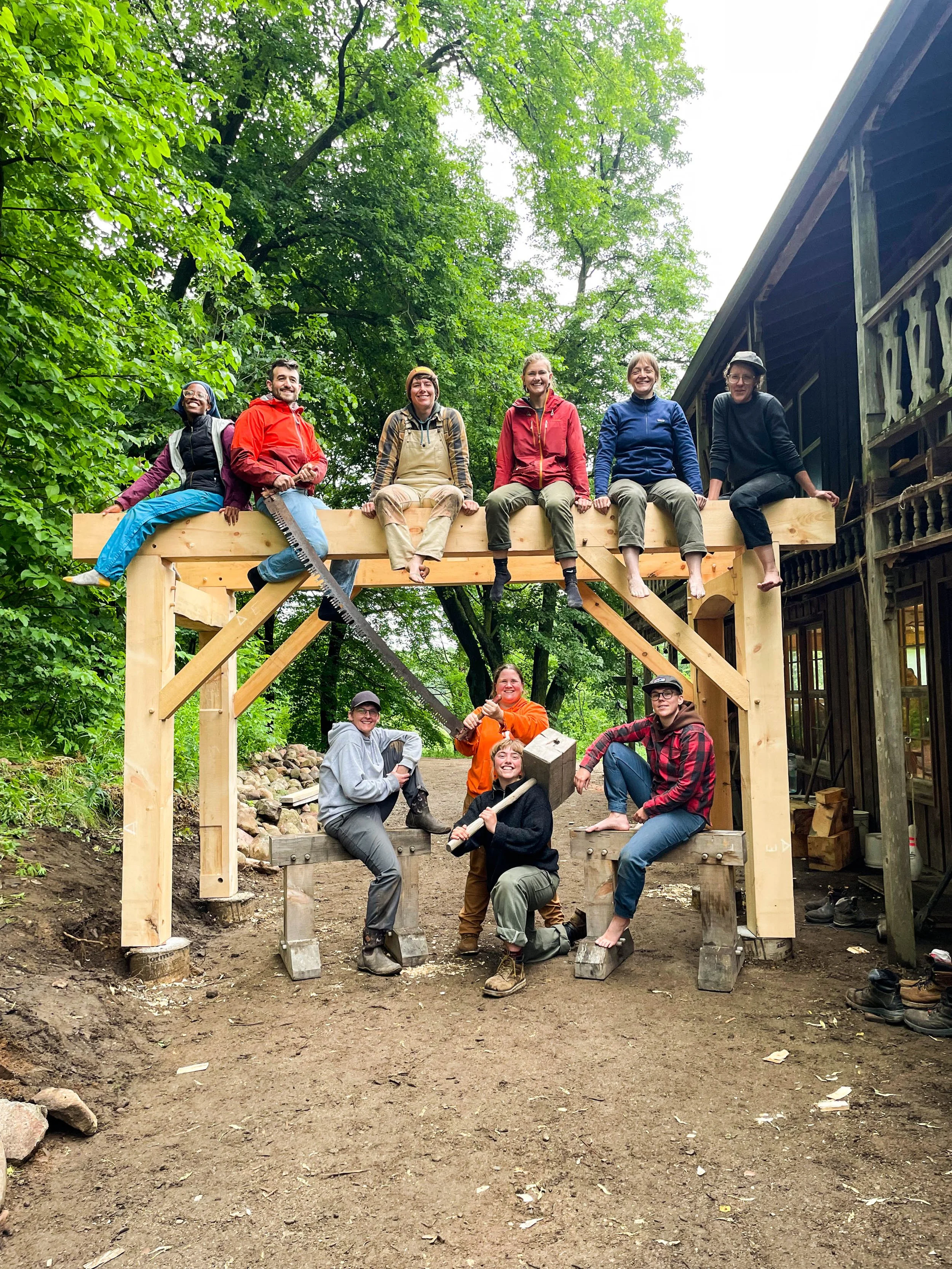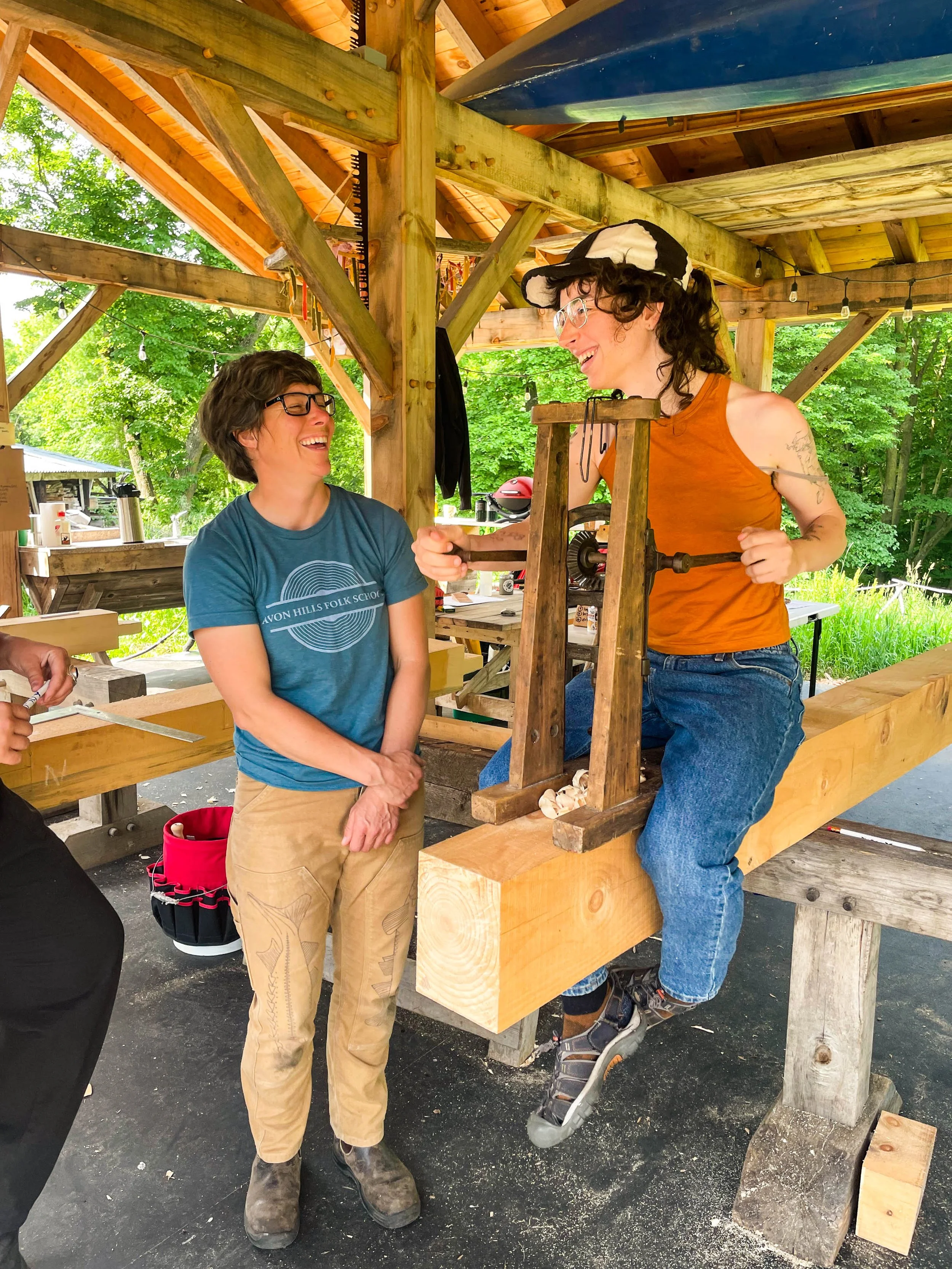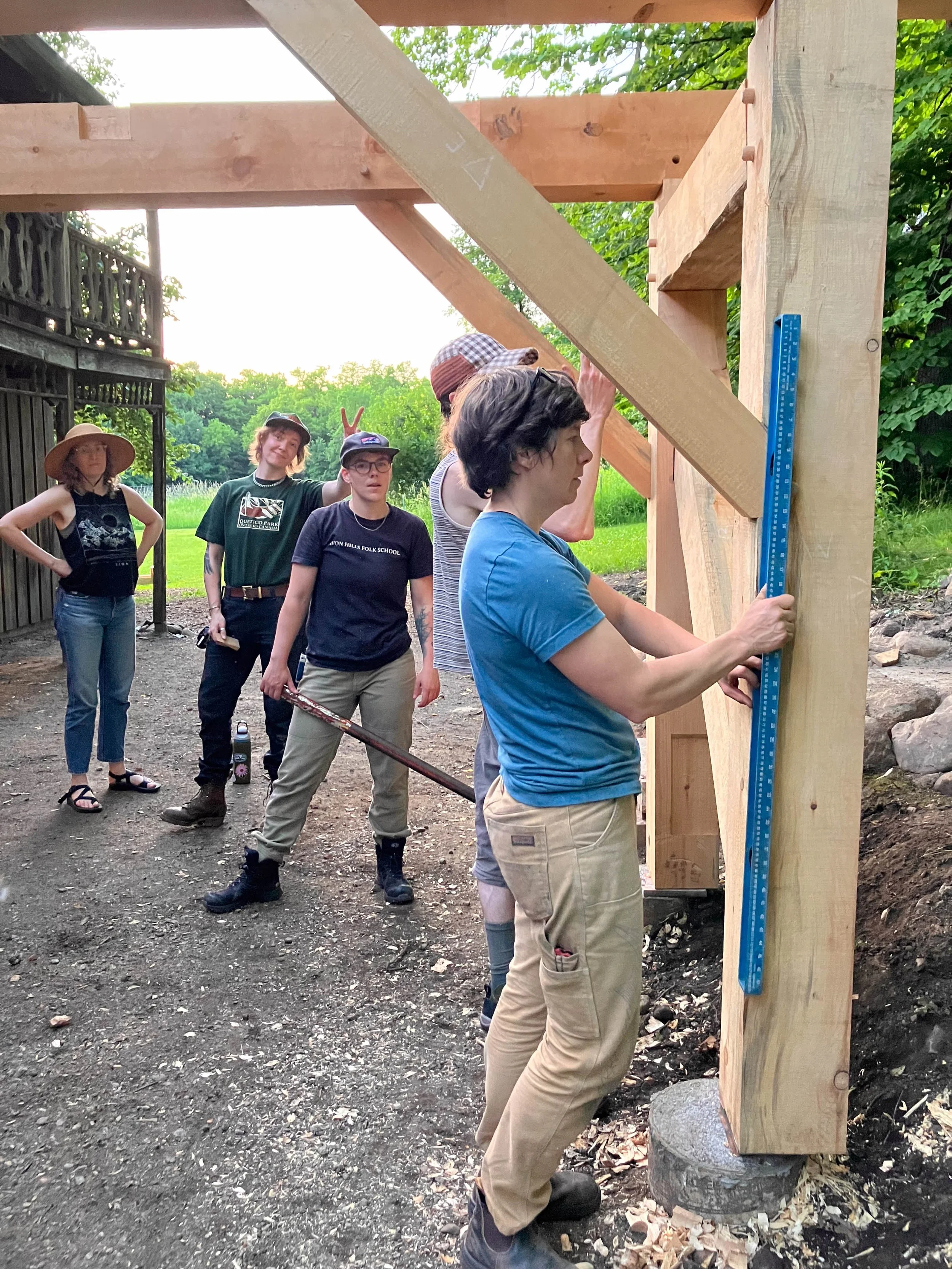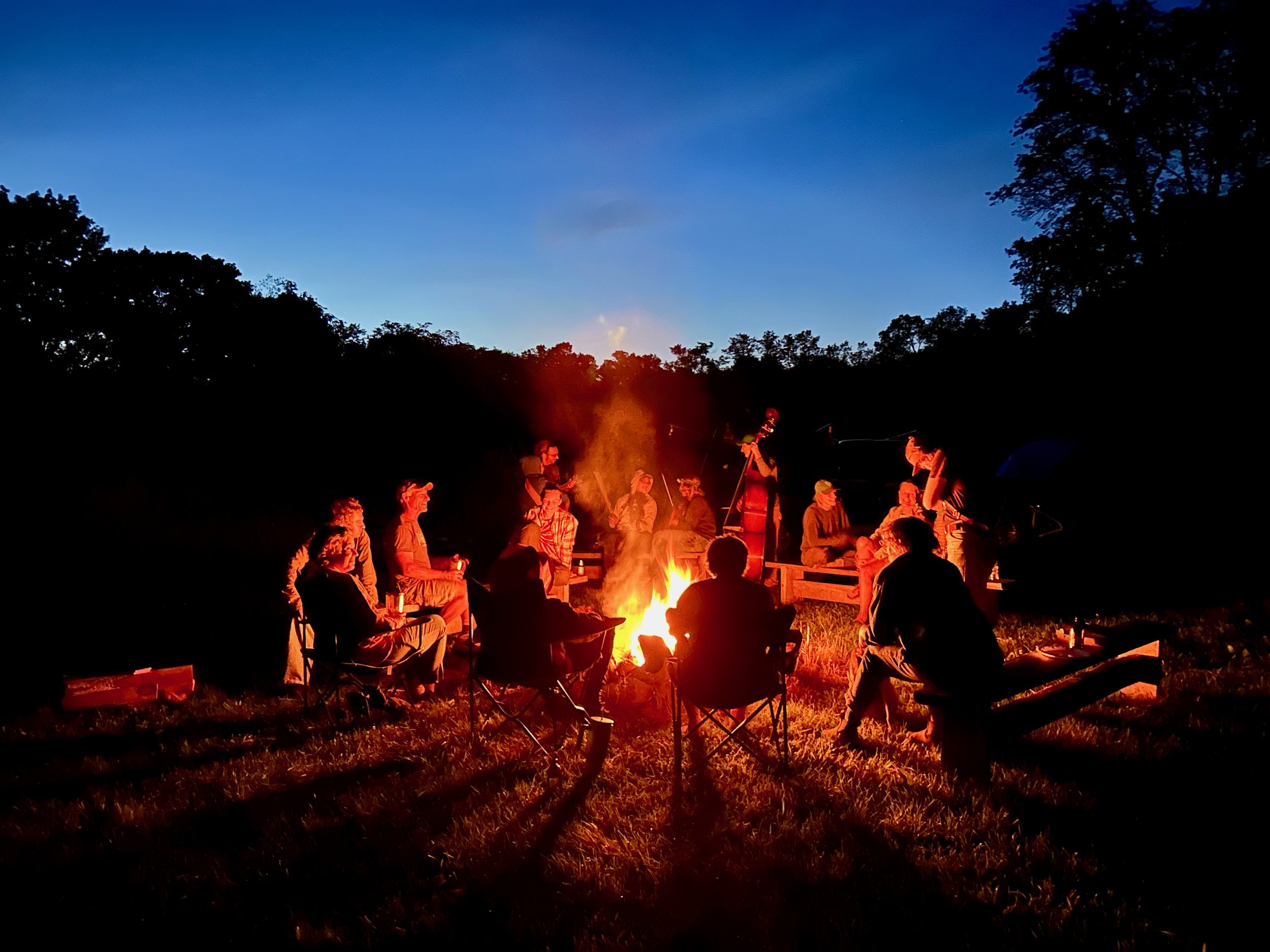
Timber Framing for FLINTA
Timber Framing for FLINTA
Course dates will be announced at a later date, but you can apply now to join the waitlist—we’ll reach out when new sessions are added.
The purpose of this class is to provide a supportive learning environment for those identifying as FLINTA to work with their hands, using traditional and modern tools to learn the craft of timber frame building. Don’t know what FLINTA means? Read the FLINTA description below!
Timber framing is the craft of joining wooden timbers together without the use of nails or metal fasteners. Timber frames are simple, strong, and elegant, and have stood for centuries around the world. In this class, students will learn the fundamentals of timber framing, from the use of hand and power tools to the layout and cutting of mortise and tenon joinery. On the final day of the class, students will work together to raise the frame and will go home with the knowledge and skills to continue their timber framing practice and build structures of their own.
Meet Your Instructor
-
Jenna Pollard (she/her) has taught timber frame workshops in Minnesota, Washington, and Arizona, and has been timber framing since 2010. She has built or assisted with building over a dozen timber frames, from her own small cabin to large pavilions for community gatherings. Her passion for teaching has led her to offer women’s timber framing courses as a way to grow the number of women in the trades and provide a supportive learning environment for other women. She is excited to teach this timber framing class for FLINTA-identifying folks, and provide mentorship for students to learn and build skills in a safe and supportive environment. Jenna identifies as lesbian and lives with her partner in northern Minnesota.
Daily Schedule: 9am - 5pm each day
Day One: Introduction to timber framing history and practice, design, and beginning square rule layout.
Day Two: Cutting mortises and tenons with hand tools.
Day Three: Designing for strength - learning to cut wind braces, and continue working on individual pieces.
Day Four: Introduction to power tool use in timber framing. Students finalize their individual pieces. Discussion of raising day logistics and preparation.
Day Five: Assembly of the frame and community raising celebration 🎉
Course Details
2025 Tuition: $570.00*
2025 Materials Fee: $20
*NOTE: Avon Hills Folk School prioritizes removing financial barriers to participation. Please reach out to us with any questions about making this work for you.
If you’re willing and able to donate to the scholarship fund to help others attend, donate here.
Meals & Accommodations
Lunch: Provided on site each day.
Breakfast and Dinner: On your own most days. Breakfast will be provided on Day One (Monday), and an evening pizza party will be provided one night of the week. We may all choose to go out and enjoy a meal together in the local community on one or more of the nights (optional).
Lodging: See our website for local suggestions as well as check out local short-term rentals. Primitive on-site camping may also be available upon request.
An article from INTO provides an informative explanation of the acronym FLINTA:
Originating from Germany, the acronym FLINTA has gained recognition and use, particularly within the LGBTQ+ community, for its inclusivity, acknowledging and respecting identities often overlooked in society. The acronym translates to Female, Lesbian, Intersex, Nonbinary, Transgender, and Agender. Each of these ultimately represents an array of non-cis and/or non-male gender identities:
F – Female: Individuals who identify as women.
L – Lesbian: Female-identifying individuals attracted to other female- or non-male-identifying individuals.
I – Intersex: Individuals born with physical sex characteristics that do not fit typical binary notions of male or female bodies.
N – Nonbinary: Individuals who do not identify strictly as a man or a woman. It’s a spectrum of gender identities that are not exclusively masculine or feminine.
T – Transgender: Individuals whose gender identity differs from the sex assigned to them at birth.
A – Agender: Individuals who do not identify with any gender.
The traditional binary understanding of gender, considering only (cisgender) male or female, is significantly limited. It fails to acknowledge the vast diversity of human experiences and identities. FLINTA, on the other hand, represents a broader range of gender identities, challenging and expanding upon traditional gender norms. By acknowledging and naming these identities, FLINTA brings visibility, recognition, and respect to the spectrum of nonbinary and cisgender presentations, genders, and orientations. In turn, this reduces stigma and creates a safer space for these gender identities to be expressed.
Tools
This course will primarily utilize hand tools for both layout and cutting of timber frame joinery. The most frequently used tools will be a tape measure, framing square, hand saw, chisel and mallet. Tools will be provided for students, but you are welcome to bring your own.
Recommended Tool List:
For those bringing their own tools to use during the course, the following is a list of the basic required tools for timber framing:
1 1/2" framing chisel (I use Barr chisels, but you can find some excellent antique framing chisels on ebay as well. Just make sure they're framing chisels and not bench chisels)
Mallet (You can use a wood, urethane or rawhide mallet, and you can make your own, too! Do not use a hammer or metal-headed mallet with timber framing chisels.)
Tape measure (25' works well for timber framing)
Combination square (you can get these for $10 - $20 at a hardware store)
Framing square (also available at hardware stores or antique stores for $5 - $30 (make sure to get one that is 24" x 16", not one of the smaller "carpenter's squares"))
Saw (I like to use both a Japanese saw and a more common hand saw).
Eye protection (safety glasses)
Ear protection (ear plugs or earmuffs)
Pencils and a utility or pocket knife to sharpen them
Optional Tools (for the seriously committed timber framer!):
Additional chisels may come in handy during the workshop if you are eager to expand your tool kit. A 2”, 1” and corner chisel would be additional chisels that I would recommend.
Drill Bits (1", 1 1/2" and 2" are the most common sizes for timber framing)
Circular saw (Any size - I use 6 1/2", 7 1/4" and 10" circular saws regularly. 17" beam saws are also very handy. The saw in the link is my top recommendation.)
Drill (I use battery powered drills and corded drills for boring large or deep holes.)
Chain mortiser (There are used mortisers available on ebay, but make sure they are set up for use in the US, or that you also purchase a transformer. Many of them are Japanese or European and need a transformer to function properly.)
*An excellent resource with descriptions and timber framing specific recommendations can be found here, with more links to recommended tools.
This class is for adults 18+
Course sold out? Submit an application to have us add you to the waitlist!




